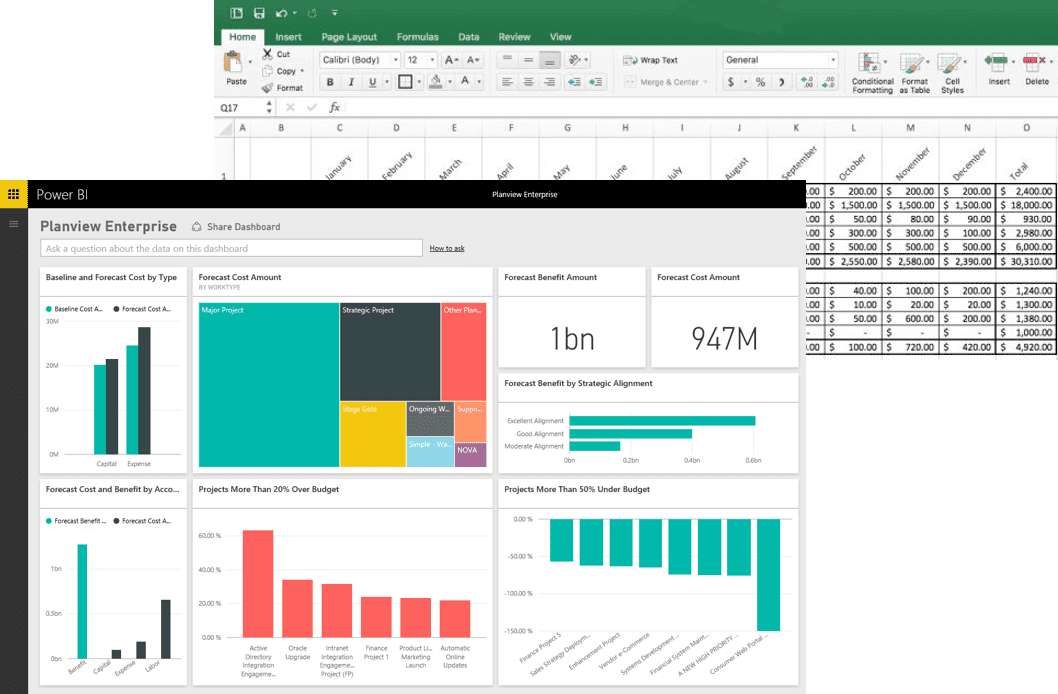Business metrics, often referred to as key performance indicators (KPIs), are measures of growth.
Regularly calculating and analysing these business metrics ensures you maintain an accurate, real-time picture of your performance. Whether measuring financial health, operational efficiency, or market growth, these metrics guide strategic decisions and improvements.
Using a powerful data visualisation tool such as Microsoft Power BI, organisations can access up-to-the-minute reports on critical business metrics in a visually accessible way. Power BI allows businesses to quickly analyse key performance indicators (KPIs) and can be configured to deliver insights directly into relevant inboxes at the most appropriate intervals, ensuring decisions are based on up-to-date business metrics.

What Business Metrics Matter Most?
Every organisation is different, and will likely know some of the measures it needs to judge its performance. However, if you’re trying to understand how your organisation is doing, there are five business metrics you should look to measure and report on:
-
Revenue growth
Revenue growth is the key metric in measuring financial performance. This is determined by the number of sales that are generated, minus the cost of refunds and undeliverable items.
Sales - Refunds and Undeliverable
Most organisations will want to report on this on at least a quarterly basis, though most will track this on a monthly or even weekly frequency.
-
Fixed costs
Fixed costs are overheads, such as office space, utility bills and storage. These are all fixed costs that stay the same each month.
Before your business can establish how much profit it can make on each product or service provided, fixed costs need to be taken into account. This is reached by calculating the gross fixed cost, divided by the total number of units or services produced. This calculation dictates what the potential for profit is on each product or service, and the maximum amount your business can spend on variable costs in order to still make a profit.
Gross fixed cost ÷ Total number of units
Fixed costs underly gross profit, so it is worth having these business metrics calculated in the background. Having this data in a Power BI report can also allow you to drill down into costs if trying to identify ways of making business savings.
-
Variable costs
Variable costs are the materials used to produce and sell one unit of product or service. For example: materials, employee wages, packaging and shipping. The variable cost is reached by calculating the gross variable, divided by the total number of products or services made.
Gross variable ÷ Number of products made
Variable costs underpin profit margins. Having an up-to-date report on material cost fluctuations, for example, can ensure you always buy at the lowest cost to maximise profits.
-
Break-even Point
The break-even point—the amount of product or service your business must sell to cover total costs—is a crucial business metric. This metric helps businesses determine the minimum sales required to avoid a loss.
By constantly monitoring this business metric through a dynamic reporting tool like Power BI, businesses can stay agile in their pricing and promotional strategies. Power BI’s ability to track fluctuations in both fixed and variable costs allows businesses to adjust their strategies in real-time.
-
Gross Profit
Gross profit is the key business metric that reflects the financial success of your business by calculating the difference between total revenue and the cost of goods or services sold. Accurate gross profit tracking is essential for developing long-term business strategies.
Power BI ensures your organisation can access up-to-date gross profit data, making it easier to refine business strategies and improve profitability. By maintaining a clear view of these essential business metrics, organisations can make informed decisions that contribute to sustainable growth.
Better Business Metrics = Business Intelligence
Understanding your organisation’s business metrics is essential for measuring its health and performance. Without these metrics, you cannot accurately assess whether you are achieving your business goals.
From customer service to finance, Akita’s expertise in Power BI can help you transform raw data into actionable insights. By visualising your business metrics and combining data from various sources, Akita enables you to derive more valuable business intelligence, which can help drive smarter, more effective decision-making.
For more information or to arrange a demo, view our Power BI services page:





